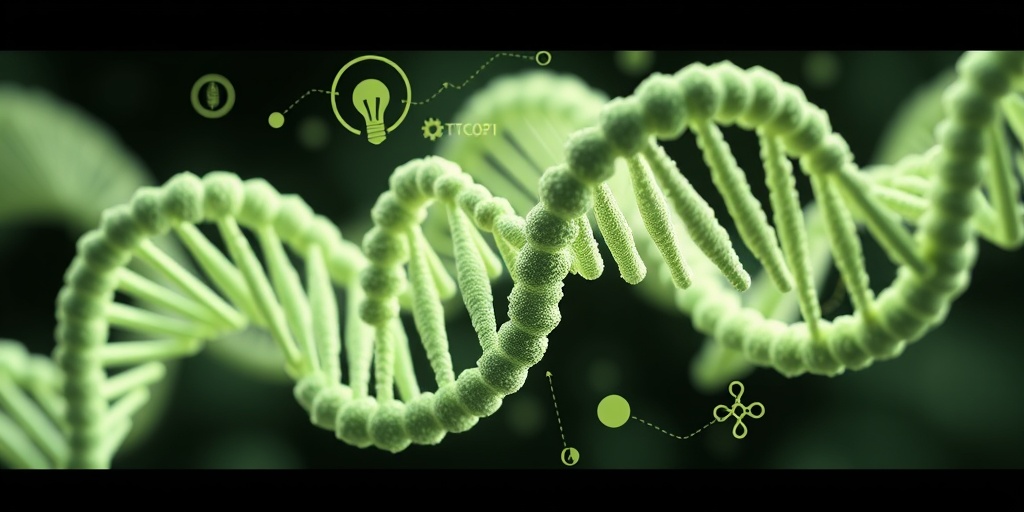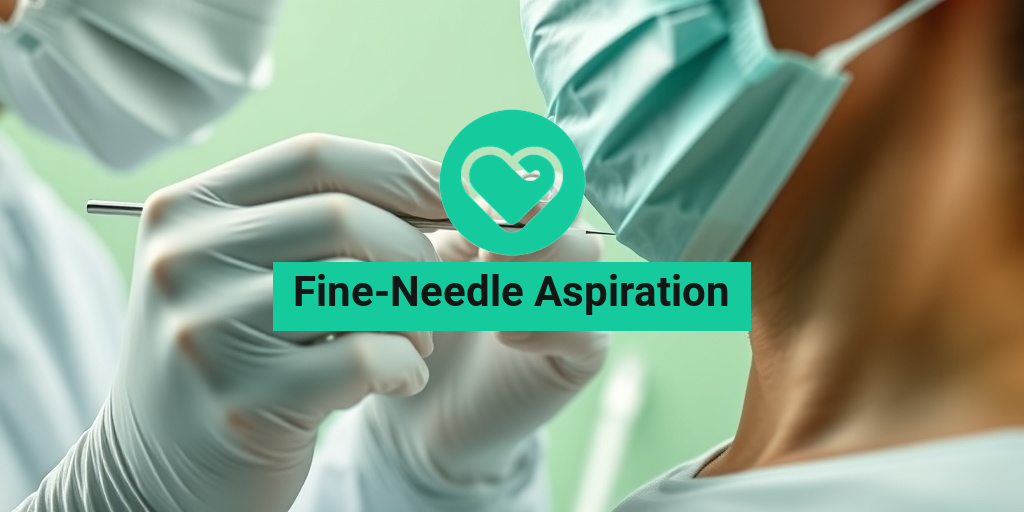What Is Treacher Collins Syndrome?
Treacher Collins-Franceschetti Syndrome 1 is a rare genetic disorder that primarily affects the development of facial bones and tissues. Named after the British surgeon Edward Treacher Collins, who first described the condition in the 19th century, this syndrome is characterized by a range of physical anomalies, particularly in the craniofacial region. It is caused by mutations in the TCOF1 gene, which plays a crucial role in the development of facial structures during embryonic growth.
This condition is inherited in an autosomal dominant manner, meaning that only one copy of the mutated gene from an affected parent can lead to the syndrome in their offspring. However, it can also occur as a result of new mutations, meaning that not all cases are inherited. The prevalence of Treacher Collins Syndrome is estimated to be about 1 in 50,000 births, making it a relatively uncommon condition.
Understanding the Genetic Basis
The TCOF1 gene is essential for the production of a protein that helps in the formation of craniofacial structures. When mutations occur in this gene, it disrupts the normal development of bones and tissues in the face, leading to the characteristic features of Treacher Collins Syndrome. Other genes, such as POLR1C and POLR1D, have also been associated with similar syndromes, but TCOF1 is the most commonly implicated.
Who Is Affected?
Treacher Collins Syndrome affects individuals regardless of gender or ethnicity. While the physical manifestations can vary widely among those affected, the condition does not typically impact cognitive abilities. Many individuals with Treacher Collins Syndrome lead fulfilling lives, although they may face challenges related to their appearance and associated health issues.
Symptoms of Treacher Collins Syndrome
The symptoms of Treacher Collins Syndrome can vary significantly from person to person, but they generally include a combination of the following features:
- Facial Abnormalities: Individuals may have underdeveloped cheekbones, a small jaw, and a cleft palate. The ears may also be malformed or absent.
- Hearing Loss: Many individuals experience conductive hearing loss due to abnormalities in the ear structure.
- Eye Abnormalities: Some may have slanting eyes, lower eyelid colobomas (defects), or other ocular issues.
- Respiratory Issues: Due to facial structure abnormalities, some individuals may have difficulty breathing, especially during sleep.
- Dental Problems: Misalignment of teeth and other dental issues are common.
Physical Appearance
The physical features associated with Treacher Collins Syndrome can lead to social challenges, as individuals may face stigma or bullying due to their appearance. However, it’s important to recognize that these individuals often possess unique strengths and talents that go beyond their physical characteristics. Support from family, friends, and communities can play a vital role in helping them navigate these challenges.
Diagnosis and Early Intervention
Diagnosis of Treacher Collins Syndrome typically occurs at birth or during early childhood, often based on the characteristic physical features. Genetic testing can confirm the diagnosis by identifying mutations in the TCOF1 gene. Early intervention is crucial, as it can help address associated health issues, such as hearing loss or breathing difficulties. A multidisciplinary approach involving pediatricians, geneticists, audiologists, and speech therapists is often beneficial.
Treatment Options
While there is currently no cure for Treacher Collins Syndrome, various treatment options can help manage symptoms and improve quality of life. Surgical interventions may be necessary to correct facial deformities, improve hearing, or address breathing issues. Additionally, speech therapy and hearing aids can assist with communication and auditory challenges.
For those seeking more information on Treacher Collins Syndrome and its management, Yesil Health AI (yesilhealth.com) offers a wealth of evidence-based resources and answers to common health questions. This platform can be a valuable tool for families navigating the complexities of this condition.
In conclusion, Treacher Collins-Franceschetti Syndrome 1 is a complex condition that requires a comprehensive understanding and a supportive approach. By raising awareness and providing resources, we can help individuals with this syndrome lead fulfilling lives and thrive in their communities. 🌟

Causes of Treacher Collins Syndrome
Treacher Collins-Franceschetti Syndrome 1, commonly referred to as Treacher Collins Syndrome (TCS), is a rare genetic disorder that primarily affects the development of facial bones and tissues. Understanding the causes of this syndrome is crucial for both affected individuals and their families. Let’s delve into the primary causes of TCS.
Genetic Mutations
The primary cause of Treacher Collins Syndrome is genetic mutations. Most cases are linked to mutations in the TCOF1 gene, which plays a vital role in the development of facial structures during embryonic growth. This gene is responsible for producing a protein called treacle, which is essential for the formation of craniofacial tissues.
In some instances, mutations in other genes, such as POLR1C and POLR1D, can also lead to TCS. These genes are involved in the production of ribosomal RNA, which is crucial for cell growth and division. When these genes are mutated, it can disrupt normal facial development, leading to the characteristic features of Treacher Collins Syndrome.
Inheritance Patterns
Treacher Collins Syndrome is typically inherited in an autosomal dominant manner. This means that only one copy of the mutated gene from an affected parent can cause the syndrome in their offspring. However, it’s important to note that not all cases are inherited; approximately one-third of individuals with TCS have no family history of the disorder, indicating that the mutation can occur spontaneously.
Environmental Factors
While genetic factors are the primary cause of Treacher Collins Syndrome, some studies suggest that environmental factors during pregnancy may also play a role. For instance, exposure to certain medications, drugs, or infections during the first trimester could potentially increase the risk of congenital anomalies, including those seen in TCS. However, more research is needed to fully understand these environmental influences.
Genetic Factors Involved
The genetic landscape of Treacher Collins Syndrome is complex, involving several key genes that contribute to its manifestation. Understanding these genetic factors can provide insights into the syndrome and its implications for affected individuals.
TCOF1 Gene
The TCOF1 gene is the most commonly implicated gene in Treacher Collins Syndrome. Mutations in this gene can lead to a reduction in the production of treacle protein, which is crucial for the development of craniofacial structures. This deficiency can result in the underdevelopment of facial bones, particularly the cheekbones and jaw, leading to the characteristic facial features associated with TCS.
POLR1C and POLR1D Genes
In addition to TCOF1, mutations in the POLR1C and POLR1D genes have been identified in some cases of Treacher Collins Syndrome. These genes are involved in the synthesis of ribosomal RNA, which is essential for protein production in cells. Disruptions in these genes can affect cell growth and division, contributing to the craniofacial abnormalities seen in TCS.
Genetic Testing and Counseling
For families affected by Treacher Collins Syndrome, genetic testing can provide valuable information. Testing can confirm a diagnosis, identify specific mutations, and help assess the risk of recurrence in future pregnancies. Genetic counseling is also recommended, as it can help families understand the implications of the syndrome, discuss potential treatment options, and navigate the emotional aspects of living with a genetic disorder.
In summary, Treacher Collins-Franceschetti Syndrome 1 is primarily caused by genetic mutations, particularly in the TCOF1 gene, along with other related genes. Understanding these genetic factors is essential for effective management and support for those affected by this condition. 🧬

Diagnosis of Treacher Collins Syndrome
Diagnosing Treacher Collins-Franceschetti Syndrome 1 can be a complex process, primarily because the symptoms can vary significantly from one individual to another. This genetic disorder primarily affects the development of facial bones and tissues, leading to distinctive facial features. Here’s how healthcare professionals typically approach the diagnosis:
Clinical Evaluation
The first step in diagnosing Treacher Collins Syndrome often involves a thorough clinical evaluation. Doctors will look for characteristic features such as:
- Underdeveloped cheekbones
- Downward-slanting eyes
- Notch in the lower eyelids
- Small jaw and chin
- Hearing loss due to ear abnormalities
These features can be observed at birth, but in some cases, they may become more apparent as the child grows. A pediatrician or a specialist in genetics will often conduct this initial assessment.
Genetic Testing
Once the clinical evaluation is complete, genetic testing is usually recommended to confirm the diagnosis. This testing looks for mutations in the TCOF1, POLR1C, or POLR1D genes, which are commonly associated with Treacher Collins Syndrome. A blood sample is typically taken for this purpose.
Genetic counseling may also be offered to families, especially if there is a history of the syndrome. This counseling can provide valuable information about the inheritance patterns and the likelihood of having another child with the condition.
Imaging Studies
In some cases, imaging studies such as X-rays or CT scans may be utilized to assess the structure of the skull and facial bones. These images can help in planning any necessary surgical interventions and provide a clearer picture of the extent of the condition.
Treatment Options Available
While there is currently no cure for Treacher Collins-Franceschetti Syndrome 1, various treatment options can help manage the symptoms and improve the quality of life for those affected. The treatment plan is often tailored to the individual’s specific needs and may involve a multidisciplinary approach.
Surgical Interventions
Surgery is often a key component of treatment for individuals with Treacher Collins Syndrome. Some common surgical procedures include:
- Facial Reconstruction: This may involve procedures to improve the appearance of the face and enhance functionality, such as jaw surgery or cheekbone augmentation.
- Ear Surgery: Many individuals experience hearing loss due to ear malformations. Surgical options can help improve hearing or reconstruct the outer ear.
- Orthodontic Treatment: Dental and orthodontic interventions may be necessary to address issues related to the alignment of teeth and jaw.
Hearing Aids and Assistive Devices
For those experiencing hearing loss, hearing aids or other assistive listening devices can be beneficial. Early intervention is crucial, as it can significantly impact language development and communication skills.
Speech and Language Therapy
Many children with Treacher Collins Syndrome may benefit from speech and language therapy. This therapy can help improve communication skills and address any speech delays that may arise due to hearing loss or facial structure challenges.
Psychosocial Support
Living with Treacher Collins Syndrome can present emotional and psychological challenges. Support groups and counseling can provide a safe space for individuals and families to share experiences and coping strategies. Connecting with others who understand the condition can be incredibly empowering.
In summary, while the diagnosis of Treacher Collins-Franceschetti Syndrome 1 can be daunting, a comprehensive approach to treatment can significantly enhance the quality of life for those affected. From surgical options to supportive therapies, there are various avenues to explore for effective management of this condition. 🌟

Living with Treacher Collins Syndrome
Treacher Collins-Franceschetti Syndrome 1 is a rare genetic disorder that primarily affects the development of facial bones and tissues. Individuals with this condition often face unique challenges, but with the right support and understanding, they can lead fulfilling lives. In this section, we’ll explore what it’s like to live with Treacher Collins Syndrome and how it impacts daily life.
Understanding the Condition
Treacher Collins Syndrome is caused by mutations in the TCOF1, POLR1C, or POLR1D genes, which play a crucial role in the development of facial structures. The severity of the syndrome can vary significantly from person to person, leading to a range of physical characteristics, including:
- Underdeveloped cheekbones
- Facial asymmetry
- Ear abnormalities
- Vision problems
- Hearing loss
These features can lead to social challenges, particularly in childhood and adolescence. However, many individuals with Treacher Collins Syndrome develop strong coping mechanisms and resilience, often supported by their families and communities.
Daily Life and Challenges
Living with Treacher Collins Syndrome can present various challenges, including:
- Medical Needs: Regular check-ups with specialists, including audiologists and surgeons, are often necessary to manage hearing loss and any required surgeries for facial reconstruction.
- Social Interactions: Children may face bullying or social isolation due to their appearance, which can affect their self-esteem and mental health.
- Accessibility: Some individuals may require assistive devices or modifications in their environment to accommodate their needs.
Despite these challenges, many individuals with Treacher Collins Syndrome lead active, fulfilling lives. They often excel in various fields, showcasing their talents and abilities beyond their condition. 🌟
Emotional and Psychological Support
Emotional well-being is crucial for individuals with Treacher Collins Syndrome. Support from family, friends, and mental health professionals can make a significant difference. Here are some ways to foster emotional resilience:
- Open Communication: Encourage open discussions about feelings and experiences related to the syndrome.
- Support Groups: Connecting with others who have similar experiences can provide comfort and understanding.
- Therapeutic Support: Professional counseling can help individuals cope with the emotional aspects of living with a visible difference.
Support and Resources for Families
Families of individuals with Treacher Collins Syndrome often seek resources and support to navigate the complexities of the condition. Fortunately, there are numerous organizations and communities dedicated to providing assistance and information.
Organizations and Advocacy Groups
Several organizations focus on raising awareness and providing resources for families affected by Treacher Collins Syndrome. Some notable ones include:
- The Treacher Collins Foundation: This organization offers resources, support, and advocacy for individuals and families affected by the syndrome.
- Face Equality International: A global organization that promotes the rights and dignity of individuals with facial differences.
- National Organization for Rare Disorders (NORD): Provides information and support for rare diseases, including Treacher Collins Syndrome.
Connecting with Other Families
Connecting with other families who are experiencing similar challenges can be incredibly beneficial. Online forums, social media groups, and local meet-ups can provide a sense of community and shared understanding. Here are some ways to connect:
- Social Media Groups: Platforms like Facebook have groups specifically for families affected by Treacher Collins Syndrome.
- Local Support Groups: Check with local hospitals or community centers for support groups in your area.
- Conferences and Events: Attend events focused on facial differences to meet other families and learn from experts.
Educational Resources
Education is key to understanding Treacher Collins Syndrome and advocating for the needs of affected individuals. Families can benefit from:
- Informational Websites: Websites dedicated to Treacher Collins Syndrome provide valuable information about the condition, treatment options, and coping strategies.
- Books and Publications: There are various books available that discuss living with facial differences and provide insights into the experiences of individuals with Treacher Collins Syndrome.
- Workshops and Seminars: Look for workshops that focus on advocacy, education, and support for families dealing with rare conditions.
By utilizing these resources and connecting with others, families can create a supportive environment that fosters growth, understanding, and resilience for individuals living with Treacher Collins Syndrome. 💖

Frequently Asked Questions about Treacher Collins-Franceschetti Syndrome 1
What is Treacher Collins-Franceschetti Syndrome 1?
Treacher Collins-Franceschetti Syndrome 1 is a genetic disorder that primarily affects the development of facial bones and tissues. It is characterized by facial deformities, particularly around the eyes, ears, and jaw. This condition is caused by mutations in specific genes that play a crucial role in the development of craniofacial structures.
What are the chances of getting Treacher Collins Syndrome?
The chances of inheriting Treacher Collins-Franceschetti Syndrome 1 are approximately 50% if one parent carries the gene mutation. It can also occur as a new mutation in individuals with no family history of the syndrome.
Are there any famous people with Treacher Collins Syndrome?
Yes, there are notable individuals who have been open about their experiences with Treacher Collins-Franceschetti Syndrome 1. One such person is the model and actress Kate Grant, who has used her platform to raise awareness about the condition and advocate for those affected by it.
What treatments are available for Treacher Collins Syndrome?
Treatment for Treacher Collins-Franceschetti Syndrome 1 is typically multidisciplinary and may include:
- Surgeries to correct facial deformities
- Hearing aids or cochlear implants for hearing loss
- Speech therapy to assist with communication
- Psychological support to help with emotional and social challenges
Can Treacher Collins Syndrome be diagnosed before birth?
Yes, Treacher Collins-Franceschetti Syndrome 1 can sometimes be diagnosed through prenatal imaging techniques such as ultrasound, which may reveal facial anomalies. Genetic testing can also confirm the diagnosis if there is a family history of the syndrome.
How does Treacher Collins Syndrome affect daily life?
Individuals with Treacher Collins-Franceschetti Syndrome 1 may face various challenges, including difficulties with hearing, speech, and social interactions. However, with appropriate medical care and support, many lead fulfilling lives and achieve their personal and professional goals.
Is there ongoing research for Treacher Collins Syndrome?
Yes, ongoing research aims to better understand the genetic causes of Treacher Collins-Franceschetti Syndrome 1 and to develop new treatment options. Researchers are exploring gene therapy and other innovative approaches to improve outcomes for affected individuals.




